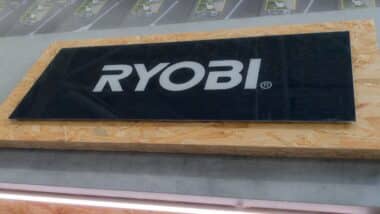 A class action lawsuit filed last week alleges that Pella windows are defective, and Pella Corporation knowingly sells defective windows to consumers in violation of Florida consumer protection laws.
A class action lawsuit filed last week alleges that Pella windows are defective, and Pella Corporation knowingly sells defective windows to consumers in violation of Florida consumer protection laws.
Specifically, the complaint asserts that “the Windows contain a latent defect that allows water to penetrate and leak behind the aluminum cladding, resulting in premature wood rot and other physical damage to both the Windows and main structure.”
According to the Pella class action, “As a result of the defect, there is a high probability those Windows will fail, and likely already have developed wood rot in the Window sashes.”
The window defect class action lawsuit contends that Pella Architect aluminum wood clad, casement windows have been marketed and sold by Pella since 1990, selling tens of thousands of windows across the U.S.
The complaint alleges that these Pella windows are defective in two separate ways. First, the wood is not treated with sufficient preservatives to protect it from moisture. And second, the design of the windows allow water to penetrate the windows.
The class action asserts that Pella knew about the defect, but failed to disclose it to potential purchasers. In addition, the complaint contends that Pella designed its limited warranty to exclude coverage for any of the leaking and rot that the defects would cause.
The lawsuit claims Pella failed to inform existing customers about the defect, refused to recall or replace the windows for those customers, and continues to deceptively market its windows to new potential customers.
Plaintiff Christopher Tracy states that he purchased a home in Florida in 2010. Tracy’s house was renovated in 2005 with Pella windows, which Tracy alleges he did not discover were defective until 2014.
Tracy contacted Pella Corporation about the defective windows in 2016, and a Pella representative came and inspected the damage to Tracy’s house, according to the complaint. But Tracy asserts that Pella refused to cover any of the damage, citing that the 10-year warranty had already expired.
This is not the only class action Pella Corp. faces over its windows. Last month, another class action was filed alleging similar defective product claims against Pella windows.
In that action, a couple from Alabama alleged that their Pella windows rotted, and Pella was unwilling to fix the damage. They proposed a Class for damages for Alabama residents who purchased Pella windows.
In this lawsuit, the complaint requests certification of two Classes, one for damages and the second for injunctive relief. The damages Class Tracy seeks to represent is all persons “who are current or former owners of structures in Florida with Pella Architect Series, aluminum-clad casement windows” manufactured between 1997 and 2007.
The injunctive relief Class includes all persons in the United States who are owners of structures with Pella Architect Windows.
The class action seeks compensatory damages and punitive damages allowed by Florida law, as well as an injunction stopping Pella from its deceptive and illegal conduct.
The plaintiff is represented by Panagiotis “Pete” V. Albanis and Frank M. Petosa of Morgan & Morgan – Complex Litigation Group.
The Pella Window Defect Class Action Lawsuit is Christopher Tracy v. Pella Corporation, Case No. 6:16-cv-1963, in the U.S. District Court for the Middle District of Florida, Orlando Division.
ATTORNEY ADVERTISING
Top Class Actions is a Proud Member of the American Bar Association
LEGAL INFORMATION IS NOT LEGAL ADVICE
Top Class Actions Legal Statement
©2008 – 2025 Top Class Actions® LLC
Various Trademarks held by their respective owners
This website is not intended for viewing or usage by European Union citizens.















55 thoughts onPella Class Action Says Windows Prone to Premature Wood Rot
We have many Pella windows from 2005-2006 that are rotting. We had Pella out to inspect the rotting windows and they said the windows only last 20 years. They weren’t helpful and did not disclose any of this. We had several of the casement windows replaced by Anderson as Pella was going to charge more than 10,000.